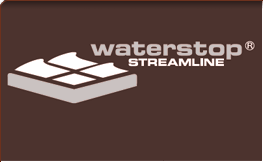

 |
Home | About Us | Products | Showcase | FAQs | How To Order | Articles | Technical Information | Contact Us |
 |
 |
||||||||||
|
|||||||||||
 
|
Technical Information
> Current Industry Issues Showers that fail in any way - from minor shower screen leaks to major issues with faulty shower trays - cost everyone including trades, contractors, builders and eventually the home owner.
Water is wonderful stuff, indeed, a requirement for life itself. But when it penetrates into unwanted areas, it can be devastating. It takes a remarkably small leak in a shower recess to dampen surrounding timbers enough to cause considerable damage, quite often by encouraging termites as well as the more obvious rotting. True costs involved with problem showers are hard to define, but every time a problem shower needs to be investigated it costs contractors time, money and possibly reputation. The following lists highlight the common issues found with current designs and construction methods for fully tiled and enclosed showers. Recessed into slab:
Aerated cement/brick and tile hobs:
Standard (proprietary) angle:
Many of the theories associated with waterproofing a shower enclosure can appear quite sound when viewed on paper. It is not until extensive testing is undertaken that the causes of so many problems in this area are uncovered. It is not our intention to upset people, but many builders remain tight-lipped about problems they are experiencing and are honestly at a complete loss as to their cause. Some will try to "band-aid" the problem to get through the warranty period when the problem will be passed on to the hapless owner. Others end up cycling through contractors believing the problems are caused by faulty workmanship. Testing these issues is extremely complex, time consuming and therefore expensive. Leak testing of suspect showers by water-proofing contractors usually involves plugging the waste with an inflatable bladder and filling the shower recess using a bucket of water obtained from another source (to rule out shower plumbing). Very often, a problem shower will hold water when tested in this manner. The water-proofer rightly informs the builder that the membrane is sound and heads off to the next job. The builder then calls the plumber who proceeds to pressure test the pipework and finds no leaks. Becoming increasingly frustrated, the builder calls out the only contractor left, the screen installer, who checks the installation, finds all of the silicon sealant intact and correctly applied and tells the builder all is well. Mr builder then heads for the scotch cabinet... As we say in our advertising, no matter how good your contractors are, most shower designs cause the problems. After trying many, our preferred method involves using water of different temperatures dyed in different colours to identify the origin, and repeating the test again and again to completely rule out the effects of chance and other anomolies. Few builders or water-proofers have the time or resources to instigate these sorts of tests, but it was necessary to find the causes once and for all. Time and again, the "leaks" proved to be emanating from grout lines and glue cavities. Careful disassembly of the shower area showed water consistantly wicking through the grout lines in the shower and down to the gap between the membrane and the tiles. The effects of hot and cold water create a pressure pump which pushes the water along in this gap and eventually out of the shower area. Once this was known, it was easy to see that any contsruction method where the screen is "sealed" to the tiles is simply not going to work. Waterstop Streamline is the only modern, aesthetically pleasing way to positively connect the shower screen to the membrane in a tiled shower. |
 |
© Gleda Pty Ltd 2008 | Contact us | Privacy | Website by Webgenesis |
 |